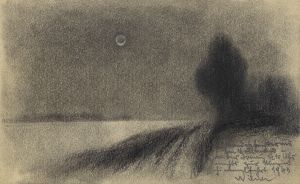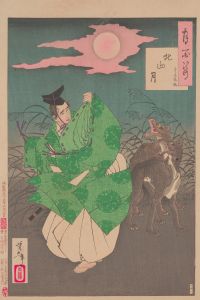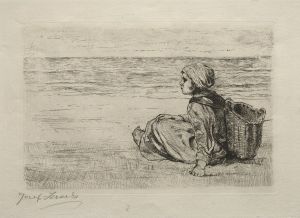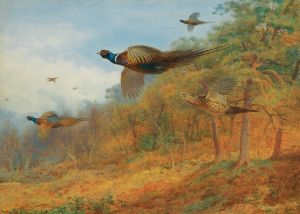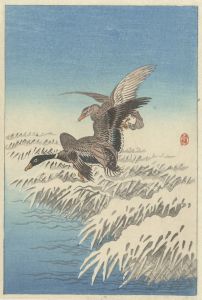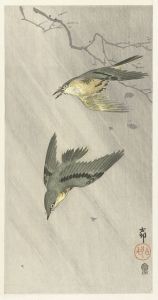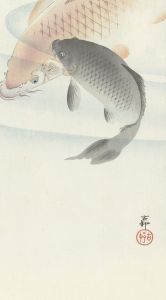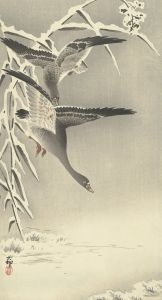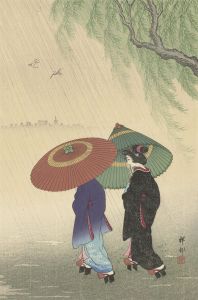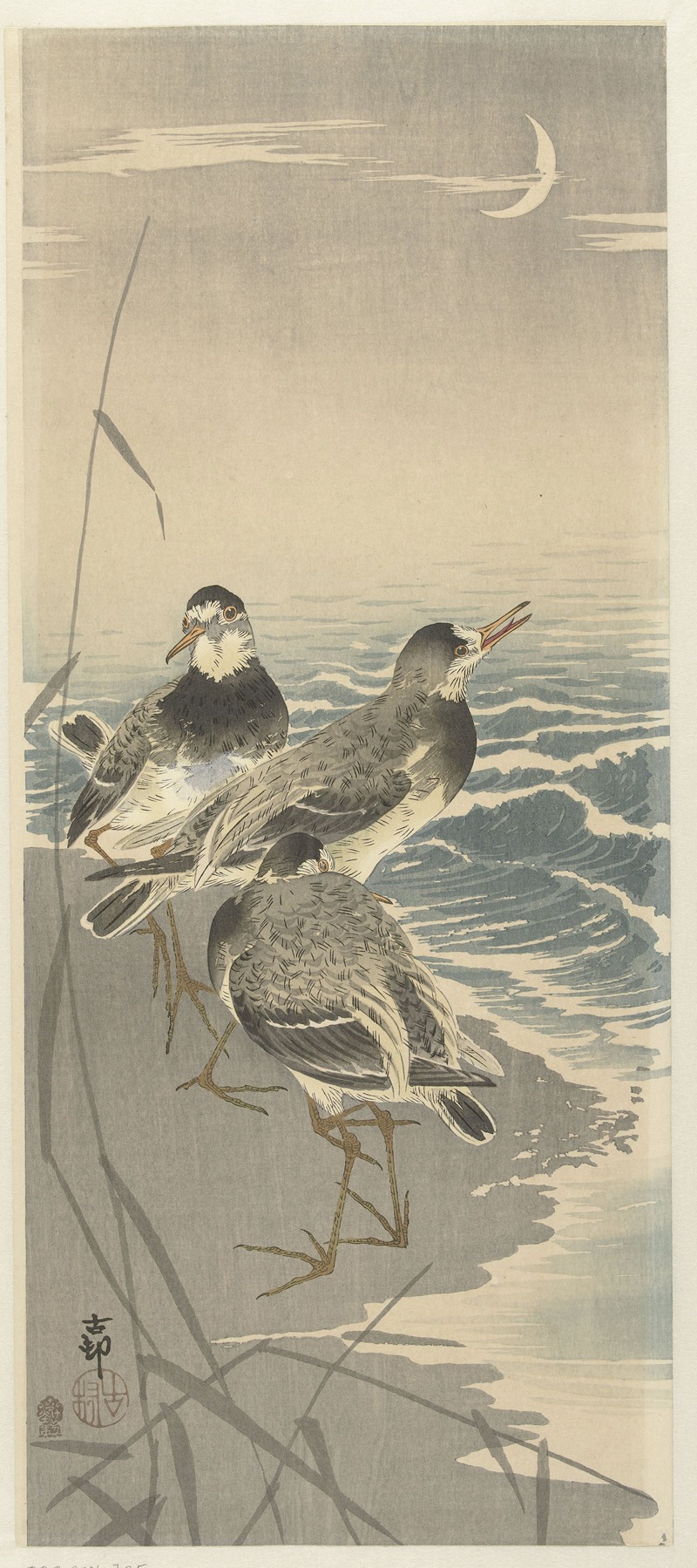
Sandpipers at sickle moon
A hand-painted replica of Ohara Koson’s masterpiece Sandpipers at sickle moon, meticulously crafted by professional artists to capture the true essence of the original. Each piece is created with museum-quality canvas and rare mineral pigments, carefully painted by experienced artists with delicate brushstrokes and rich, layered colors to perfectly recreate the texture of the original artwork. Unlike machine-printed reproductions, this hand-painted version brings the painting to life, infused with the artist’s emotions and skill in every stroke. Whether for personal collection or home decoration, it instantly elevates the artistic atmosphere of any space.
Ohara Koson (1877–1945) was a prominent Japanese artist known for his contributions to the shin-hanga ("new prints") movement, which revitalized traditional ukiyo-e woodblock printing techniques during the early 20th century. Koson specialized in kachō-e, or "bird-and-flower" prints, a genre that depicted natural subjects with exquisite detail and artistic sensitivity. His works often featured birds, flowers, and landscapes, rendered with a harmonious balance of realism and stylization.
"Sandpipers at Sickle Moon" is one of Koson's celebrated woodblock prints. The artwork portrays a serene and atmospheric scene of sandpipers, small shorebirds, standing or wading in shallow water under the light of a crescent moon. The composition is marked by its simplicity and elegance, with the birds depicted in delicate detail against a soft, muted background. The crescent moon, often referred to as a "sickle moon" due to its shape, adds a poetic and tranquil quality to the image, evoking a sense of quietude and connection with nature.
Koson's mastery of woodblock printing is evident in the subtle gradations of color and the fine lines used to depict the birds' feathers and the rippling water. His ability to capture the essence of his subjects with minimalistic yet expressive elements is a hallmark of his style. The print reflects the influence of traditional Japanese aesthetics, particularly the concept of "mono no aware," or an appreciation for the fleeting beauty of the natural world.
"Sandpipers at Sickle Moon" is an example of Koson's collaboration with publishers such as Watanabe Shōzaburō, who played a key role in promoting shin-hanga prints to both Japanese and international audiences. Koson's works, including this piece, were highly regarded for their technical excellence and artistic appeal, and they found a receptive audience among collectors in Japan, Europe, and the United States.
While specific details about the creation date or the exact context of "Sandpipers at Sickle Moon" are not readily available, the print is representative of Koson's broader oeuvre and his dedication to capturing the beauty of nature. Today, his works are held in high esteem and are featured in museum collections and private holdings around the world.





